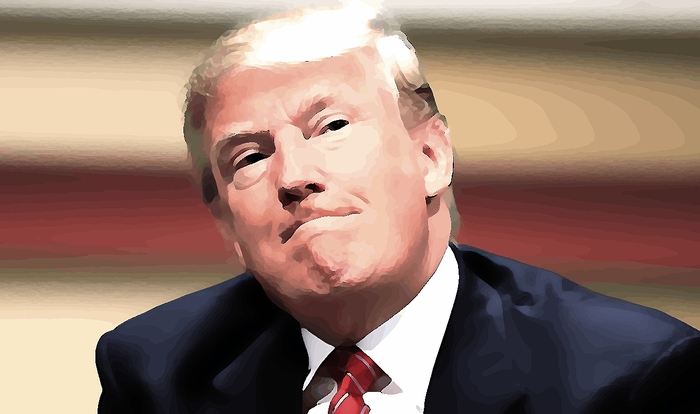
The choice of Arizona — the President dropping by a Honeywell facility in Phoenix to thank workers there for the production of essential medical equipment — is obvious from a political perspective: the state's a "twofer" in the fall election as it's contested at the presidential election (Trump carried Arizona by only 3.6% in 2016) and features a Senate race that could decide which party controls that chamber next year.
As for Ohio, call it an insurance policy: no Republican has ever won the White House without Ohio; only twice since 1896 has a Democrat prevailed without it (John F. Kennedy in 1960; Franklin D. Roosevelt in 1944).
Trump carried the Buckeye State by 8% in 2016; one would assume it's only attainable for Democrats in a sea-change election — i.e., a massive referendum against Trump that puts some ordinarily-red states into play (Georgia, Texas).
However, recent polls show a presidential decline among Ohioans in both approval rating and handling of the coronavirus crisis. So perhaps it's wisest for Trump to return to Ohio sooner rather than later (his visit to Toledo in January was Trump's 15th stop in the Buckeye State since taking office).
Now, let's suppose that once the President hits the road he discovers how much he missed the audiences and adulation — and how little he misses the White House press corps. As such, Trump decides he wants to spend more time on Air Force One.
If so — if Trump continues to suffer from presidential wanderlust — where else should he travel with his re-election fortunes in mind?
This Los Angeles Times analysis notes six states that should decide the fall election: Arizona, Florida, Michigan, North Carolina, Pennsylvania and Wisconsin. Collectively, the six states amount to 101 electoral votes. They all went into Trump's column in 2016, accounting for one-third of his 306 electoral votes.
But is this year's presidential race really as narrow as just those six competitive states ("competitive" in that Trump won all by 3.6% or less)?
An argument can be made that at least four more states could be added to the conversation — Maine, Minnesota, Nevada and New Hampshire. All four went for Hillary Clinton; she carried none by more than 2.7% (the Trump campaign's interest in Minnesota is well-documented).
Raise the number of states in play to ten and that pushes the electoral-vote total of potential battleground states to 125 out of a pool of 538. Or, to look at the election in a different light: subtract the six 2016 red states from Trump's column and the four blues from Joe Biden's (assuming he's the nominee) and the race starts out as 205 electoral votes for the GOP and 208 electoral votes for the Democrats.
In other words, 2020 is a 50-state election that begins as an electoral-vote dead heat — and boils down 10-or-fewer states.
And that's the key question, with the November election now less than six months away: how many of those states will be in play come Election Day — and just how volatile is the map?
In the 2016 election, Trump managed to "flip" three states that were either reliably Democratic dating back to the Bush 41 presidency (Michigan, Ohio and Pennsylvania) plus one typically competitive yet voted twice for Barack Obama. That would be Florida which, like Ohio, is good at picking presidential winners — with the exception of 1992, the Sunshine State siding with the victor in every election dating back to 1964).
That's far more volatile than the 2012 election which, despite the appearance of a competitive race between President Obama and Mitt Romney, wasn't all that much of a game0-changer as far as recoloring the map. Only two states voted differently than in 2008 (Indiana and North Carolina); just four states were decided by less than five points.
By contrast, nine states switched from red to blue in the 2008 Obama victory, which is why the electoral tally climbed from John Kerry's 252 in 2004 to Obama's 365 four years later (in 2012, Obama received 33 fewer electoral votes, thanks to the loss of the two stars plus reapportionment changes, making him the first victorious incumbent since FDR in 1944 to regress in the Electoral College).
However, Obama's first victory, in addition to adding a whole of blue to the election map, also supposedly heralded a change in the political landscape — his ascent to the presidency marking the dawn of new Democratic governing majority that would last decades, not one or two election cycles.
Obviously, that didn't happen.
But what did happen in 2016: in addition to Trump getting the better of Hillary Clinton in the aforementioned battleground states, other states that had been Republican-leaning tilted further to the right, while several reliably Democratic states titled toward the center.
Was the GOP tilt a function of Trump's unconventional appeal and fiery demeanor (far more outspoken than Mitt Romney or John McCain and willing to take on hot-button issues like immigration and trade imbalances)? Or was it a reaction to Mrs. Clinton's presence on the ballot?
Similarly, was the Democrats' 2016 movement to the center a reflection of Trump's working-class appeal or, again, a testament to the inability of the Clinton campaign to appeal to so-called "Reagan Democrats" — well, a 21st-Century version of the bloc that helped to bring Ronald Reagan to power — that previously gave the benefit of the doubt to Obama and Bill Clinton?
That's a lot for Trump to ponder as he makes future presidential visits to Ohio and beyond.
Stay tuned to see where else the President travels in the coming weeks, due to the man's urge to escape the confines of the White House . . . and what political necessity dictates.
Sign up for the daily JWR update. It's free. Just click here.


 Contact The Editor
Contact The Editor
 Articles By This Author
Articles By This Author